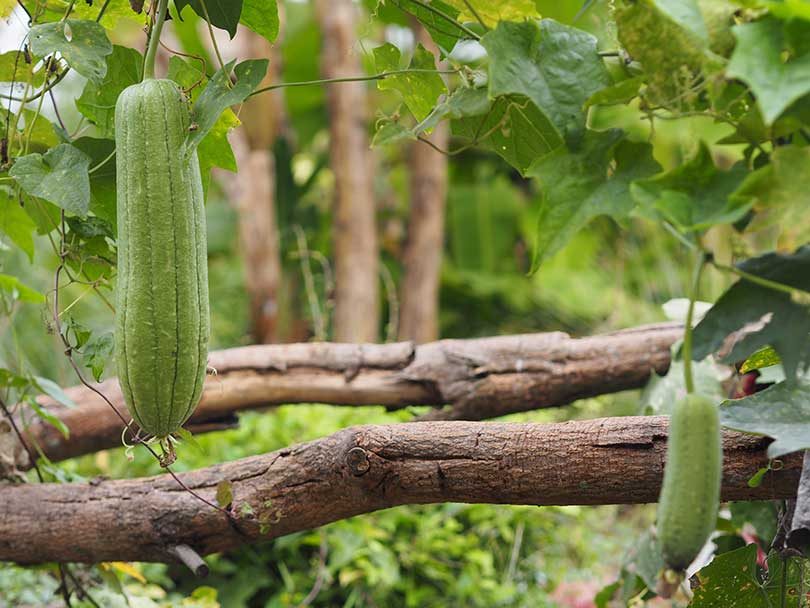Grow your own shower buffers
By Vicki Spencer, Master Gardener
It was 50 years ago, while studying in Greece, that I first saw luffa sponges. They were displayed everywhere in Athens’ outdoor markets. I thought they were sea sponges magically transformed by water to become the perfect back scrubber, skin exfoliator or nonabrasive household sponge.
I brought my “unique” Mediterranean find home and enjoyed it for months before it wore out. This prompted a pre-internet trip to the library to learn how to replace it. To my surprise, luffa sponges come from gourds, not the ocean. This was good news in landlocked Colorado as I realized I could grow my own.
My research revealed two main species of luffa plants. Luffa acutangula grows up to 30 inches. Its slender fruit has sharp ridges that run the entire length. The more common Luffa aegyptiaca grows up to 2 feet and has a smooth skin with visible, blunt ridges.
I chose Luffa aegyptiaca which takes about 90 to 120 days to reach maturity and several more weeks to develop tough inner fibers to be dried on the vine before harvesting. That’s possibly 150 to 200 warm, frost-free days — which is hit or miss in Colorado. I decided to start my seeds indoors.
Practice makes perfect, or so they say. After several attempts, I found it best to start seeds five to six weeks before transplanting outside. First, I scarified seeds with a few light swipes of sandpaper, then soaked them in hot water a day before planting them in small pots with moist starting mix. I placed the pots on a tray, covered them with plastic wrap, and placed the tray on top of the refrigerator where it’s warm. A week later, after the seeds germinated, I removed the plastic, placed the tray in a sunny window and kept the soil consistently moist. A couple weeks after the last frost, I transplanted them outside.
Luffa grows rigorously with six hours of sunlight. It’s not particular about soil, but it produces more if fertilized. It will climb on a chain link fence, trellis or other sturdy structure. It also grows along the ground, but climbing gourds are straighter and less susceptible to powdery mildew. Prevent this fungus by spacing plants to allow air flow, watering soil early in the day and keeping the leaves dry.
Young fruits can be harvested for a delicious stir-fry vegetable, but you’ll need mature gourds to make sponges. About six weeks before the first frost, cut the plant back to the last gourd you expect to mature. Pinch off new flowers to provide energy to existing gourds.
Gourds are ready to pick when they turn tan and feel lightweight; you’ll hear the seeds rattle inside. To prepare the sponges, immerse in hot water until the skin peels easily, shake the seeds out and remove any pulp, soak in 10% bleach solution, rinse thoroughly and hang them to dry in the sun. In a few days you will have natural, fully biodegradable sponges for personal use.
Gardener Vicki Spencer has an eclectic background in conservation, water, natural resources and more.

